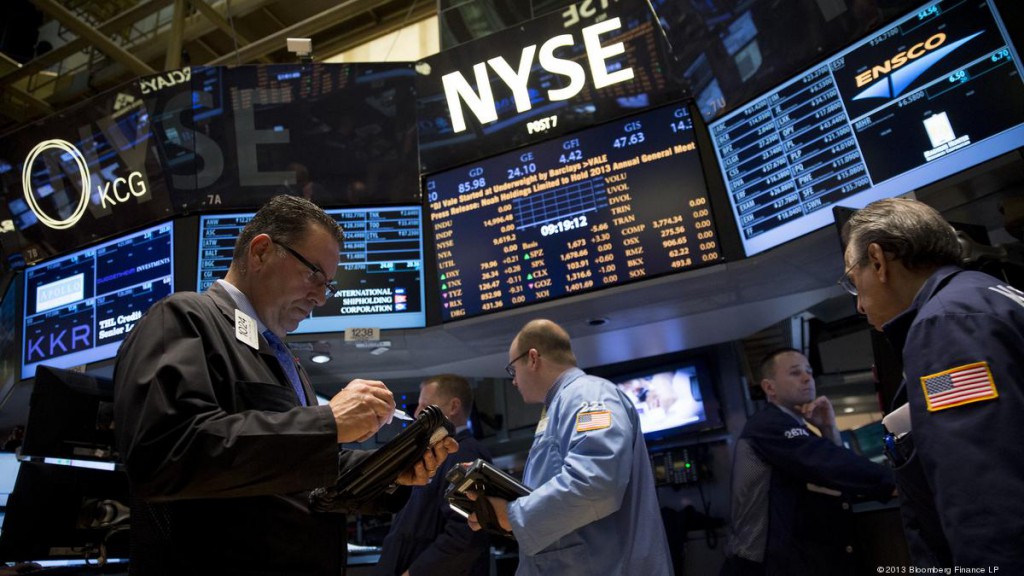The leading U.S. equity indices, the DJIA and SPX, reached record intraday highs on Tuesday, shortly after New York markets opened, with the DJIA breaking through the crucial handle of 26,000. However, the heights were short lived; after rising through the first level of resistance the DJIA index then fell circa 300 points from its record high, to close the day out down circa 0.04%. The SPX experienced an even more volatile session; rising through R3 and breaching 2,800, to then crash through S3, closing down circa 0.35% on the day.
The reasons given for the sudden sell off were various; claims that investors had decided to profit take, or that investors had suddenly become spooked believing that the market was extremely overbought, were the two main discussion points. However, during the stellar equity market rises of 2017 there were many pauses for breath as the markets then found further momentum, therefore we may be witnessing market participants taking a collective time out, whilst contemplating what reasons exist to actually push USA equity markets higher in 2018. The only significant calendar news from the USA came in the form of the latest Empire manufacturing index, which missed the forecast of 19 by printing a reading of 17.7.
Gold failed to attract bids as a safe haven, falling by circa 0.2% to 1,333, WTI oil also fell, crashing through S3 at one stage. USD failed to make gains versus its major pairs, there was no evidence that investors have been rotating out of stocks into currencies; USD/JPY fell by circa 0.3%, USD/CHF fell by a similar amount, with USD/CAD down by circa 0.2%. EUR/USD rose by 0.2% with GBP/USD also rising by a similar amount. The Swiss franc attracted safe haven bids as the risk on mood evaporated, with CHF experiencing rises versus all of its main peers.
Bitcoin experienced a serious, approximate 30%+ crash on Tuesday, plunging to a level not witnessed since the December 22nd flash crash, when circa 40% of its value was wiped off within hours, BTC/USD fell to a low of 9,970 late on the day, circa 600 points below the December flash crash low.
Having reached a nineteen month high GBP/USD held its level, as did the U.K. pound versus the majority of its peers on Tuesday. This was despite Brexit talks beginning to take on a more threatening tone from existing E.U. members, some of whom, such as Norway, are making their intentions clear regarding the desire from the British contingent for a bespoke deal. Leading E.U. negotiators Michel Barnier and Donald Tusk also held out an olive branch; suggesting that it wasn’t too late for the U.K. to call the complete Brexit process off. These calls may get louder as the countdown clock reaches March, which will leave one exactly calendar year for the U.K. to put together the complete exit package, which currently looks an impossible task.
European news mainly centred on inflation figures from Germany and the U.K., Germany’s CPI came in at 1.7% YoY up to December, with the U.K. reading coming in as forecast at 3% YoY, a fall from 3.1%. However, RPI excluding mortgage payments rose to 4.2%, therefore consumers are feeling the squeeze and if WTI oil stays above the $60 per barrel handle for any sustained period of time, then inflation CPI could squeeze upwards over the next quarter, putting the Bank of England in an awkward position; do they raise rates to counter inflation potentially putting Britain’s weak growth at risk, or allow inflation to find an organic level? The FTSE 100 endured a fall of 0.17%, with most European indices also falling and judging by the futures market the leading U.K. index could open sharply down on Wednesday.
U.S.DOLLAR
USD/JPY fell by circa 0.3% reaching S1 after trading in a tight range of approx 0.4% on the day. Ending at 110.5 it’s the first time USD/JPY has fallen close to the 110.00 handle since mid September 2017. USD/CHF traded in a tight bearish range, falling by a similar amount to USD/JPY, also reaching a low not witnessed since September, closing out at circa 0.959. USD/CAD closed the day out close on unchanged at 1.243, resting on the daily PP.
EURO
EUR/USD whipsawed in a narrow range with a slight bearish bias, during Tuesday’s sessions; rising above the daily PP, to then fall through S1, to then reclaim its position above the PP, closing up by circa 0.1% at 1.225. EUR/GBP also whipsawed in a narrow bearish range throughout the day; falling through S1 twice before reclaiming position at the daily PP, ending the day down circa 0.1% at 0.888. EUR/CHF traded in a wide bearish range, breaching S2, closing out down circa 0.6% at 1.176.
STERLING
GBP/USD traded in a narrow bearish range closing up by 0.1% at 1.379, just above the daily PP. GBP/CHF fell, as did the majority of currencies versus the Swiss franc on the day, the only significant gains sterling experienced was versus the N.Z. dollar, GBP/NZD rose through R1, closing up circa 0.3% at 1.898.
GOLD
XAU/USD whipsawed throughout the day, rising to 1,342 early in the morning session, then falling through the second level of support S2, to recover a proportion of the losses, to close out down circa 0.2% on the day at 1,338.
INDICES SNAPSHOT FOR JANUARY 16th
• DJIA closed down 0.04%.
• SPX closed down 0.34%.
• NASDAQ closed down 0.51%.
• FTSE 100 closed down 0.17%.
• DAX closed down 0.35%.
• CAC closed down 0.07%.
KEY ECONOMIC CALENDAR EVENTS FOR JANUARY 17th
• EUR. Euro-Zone Consumer Price Index (YoY) (DEC F).
• USD. Industrial Production (MoM) (DEC).
• CAD. Bank of Canada Rate Decision (JAN 17).
• USD. U.S. Federal Reserve Releases Beige Book.


